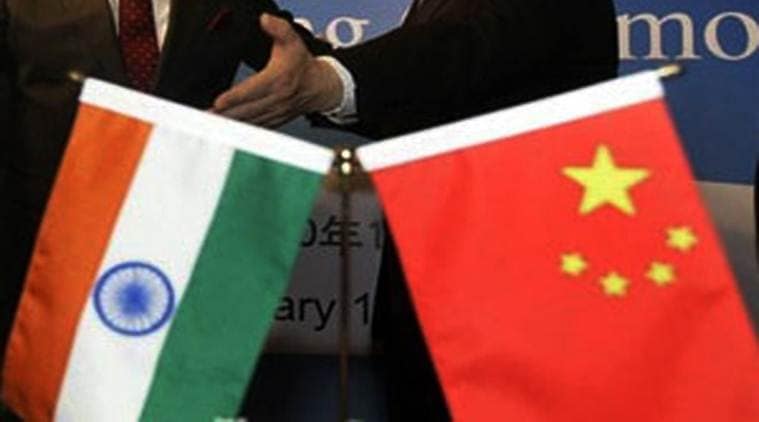 The reports of the most recent transgressions by China, in terms of the places on the map and the number of incidents, suggest that the current scenario is quite different from the pattern of the past. (File Photo)
The reports of the most recent transgressions by China, in terms of the places on the map and the number of incidents, suggest that the current scenario is quite different from the pattern of the past. (File Photo)
Some years ago, as someone aspiring to be the prime minister of India, Narendra Modi had alluded to my friendly visit to China and proclaimed that we should have shown “red eyes” to Beijing instead. I had become external affairs minister after a long journey India and China had embarked upon together, following then Prime Minister Rajiv Gandhi’s path-breaking visit which resulted in a thaw of the post-1962 freeze in relations. We took several steps to repair the damage that our estrangement had caused. We opted to open up trade and business with China, undeterred by the pending issue of the LAC. Regarding the sensitivity about the LAC, we had the Peace and Tranquility agreement with a mechanism for periodic talks at the level of Special Representatives. Slow and steady was the mutually accepted pace to iron out the differences of perception on the LAC — in the hope that we would, ultimately, be able to accomplish demarcation. This allowed periodic stand-offs between the Indian Army and the PLA to be resolved, despite the differing perceptions regarding the LAC.
The reports of the most recent transgressions by China, in terms of the places on the map and the number of incidents, suggest that the current scenario is quite different from the pattern of the past. Similarly, our response, too, seems different in that the talks initiated are military-to-military instead of being steered by the foreign ministry. The military can, at best, take steps to reduce the local tension and give feedback for the governments to look at the differences of perception again. But this time, the Chinese seem to be looking for something else. There is a political message that can be seen in the context of concerted efforts being made to surround and isolate China. The concerns about the origin and handling of COVID-19 as well as US President Donald Trump’s calculations have only added to the pressure.
Whatever be China’s ambitions in the East China Sea, the Indian Ocean, the OBOR, and the world, India needs to take a position that suits it and addresses its immediate concerns rather than play “follow the leader” to those whose current position might be adversarial to China but could change radically in a short period. India may have enough for itself in terms of military ware, but it is far from adequate to engage in a two-front engagement and join in policing the Indo-Pacific.
If we think carefully, we would at least figure out that an India-China war is neither desirable nor feasible. In fact, no war is really possible in our times. In the coming years, we might all have to think more about economic survival than dominance and power games.
Where is the charm that PM Modi reserves for global colleagues? Could he not have drawn on his reserves, as he draws on the RBI reserves to keep the domestic economy from stalling in crisis? Or are we to believe that China is immune to the charm and its sense of self-interest is so strong that familiar gestures mean little. Be that as it may, with the report of tragic casualties on the Indian side, the first since 1975, this is no longer something that can be treated with a shrug of “this too shall pass”. We have reached the point of no return, so to speak. The questions posed by the Congress might not be answered, but things cannot go on like this.
If war is not a practical solution, how do we go forward? To begin with, we have to gauge how much China flexes its muscles to dominate and expand, or how much it is prepared to engage in some symbolism that it thinks serves another purpose. While we are on that job, we might as well figure out how we want to position ourselves. We want to lead in the world — and we can, in software, sports, culture, etc. We also want to be an economic power that can match China — perhaps in due course it is possible, but with a lot of hard work. We want to be a military power to match China as well, for which we will have to innovate on the strategies of warfare and training. We want to win friends and influence people, but for that we will have to show that liberty is unique to India for the world to emulate.
Whatever call we take, Doklam mustn’t be repeated. It is for the government of the day to find the way and not for the Opposition to shoulder the burden. Our ability to pull off surgical strikes and air attacks, surely, is a reputation that does not confine itself to our western border. Of course, the target might not be an equally sitting duck. We need to draw the line of honour with care, but draw it we must. If ever India had a mann ki baat to say, it is this.
The belated all-party meeting exhibited the much-needed support for the government but flagged issues that need to be addressed as part of a larger approach. How are we to live with a neighbour we did not choose, but need to live with in honour and cooperation?
The writer is a senior Congress leader and former external affairs minister